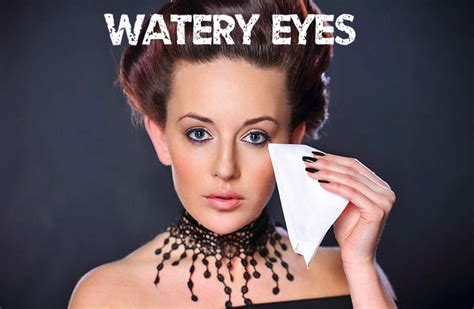
Watery Eyes
Published Date: 6/17/2023 6:06:37 AM
- Watery Eye is a condition in which there is an overflow of tears onto the face, often without a clear explanation. There is insufficient tear film drainage from the eye or eyes. Instead of the tears draining through the nasolacrimal system, they overflow onto the face.
- Tears are normally discharged through your tear ducts and then evaporate. When you produce too many tears, they overwhelm your tear ducts, and you develop watery eyes.
Causes:
- The two main causes of watering eyes are blocked tear ducts and excessive production of tears.
Blocked tear ducts:
- The most common cause of watering eyes among adults and older children is blocked ducts or ducts that are too narrow. Narrowed tear ducts usually become so as a result of swelling, or inflammation. If the tear ducts are narrowed or blocked, the tears will not be able to drain away and will build up in the tear sac.
Over-production of tears:
- Irritated eyes may produce more tears than normal as the body tries to rinse the irritant away.
The following irritants can cause the over-production of tears:
- some chemicals, such as fumes, and even onions
- infective conjunctivitis
- allergies conjunctivitis
- an injury to the eye, such as a scratch or a bit of grit (tiny pebble or piece of dirt)
- trichiasis, where eyelashes grow inward
- ectropion, when the lower eyelid turns outward
Some people have tears with a high fat, or lipid, content. This may interfere with the even spread of liquid across the eye, leaving dry patches which become sore, irritated and cause the eye to produce more tears.
Treatment:
- Treatment depends on how severe the problem is and the cause.
- In mild cases, doctors may recommend just watchful waiting, or doing nothing and monitoring the patient’s progress.
Different causes of watering eyes have specific treatment options:
- Irritation: If the watering eye is caused by infective conjunctivitis, the doctor may prefer to wait for a week or so to see if the problem resolves itself without antibiotics.
- Trichiasis: An inward-growing eyelash, or some foreign object that lodged in the eye, the doctor will remove it.
- Ectropion: The eyelid turns outwards – the patient may need to undergo surgery in which the tendon that holds the outer eyelid in place is tightened.
- Blocked tear ducts: Surgery can create a new channel from the tear sac to the inside of the nose. This allows the tears to bypass the blocked part of the tear duct. This surgical procedure is called dacryocystorhinostomy (DCR).
If the drainage channels, or canaliculi, on the inside of the eye are narrowed but not entirely blocked, the doctor may use a probe to make them wider. When the canaliculi have completely blocked an operation may be required.
Watering eyes in babies:
- In newborns, the condition usually resolves itself within a few weeks.
- Sometimes a sticky liquid may form around the baby’s eye or eyes. You can use a piece of cotton wool that has been soaked in sterile water to clean the eyes.
- Sterile water needs to be boiled, but make sure it is cooled before dipping the cotton wool into it.
- Sometimes tears can be dislodged by gently massaging the tear ducts. Apply light pressure with the finger and thumb to the outside of the nose.
Home remedies:
- Some cases of watering eyes can be treated without seeing a doctor.
Here is some suggestion:
- Take a break from reading, watching TV, or using the computer
- To lubricate the eyes with eye drops, available to purchase over-the-counter (OTC) or online.
- Hold a warm, damp cloth over the eyes and massage the eyelids to release any blockages